by John Uren
Some words of caution to your readers.
It’s easy to assume, as I did, that if the upper barn flooring and the supports underneath look OK, the floor is safe, and can carry a load.
Not necessarily so.
The barn on the East end of our property ( We have 2, the home barn being built in 1873) was probably built in the late 1800’s but we’re not sure. It has been kept in reasonable repair ever since.
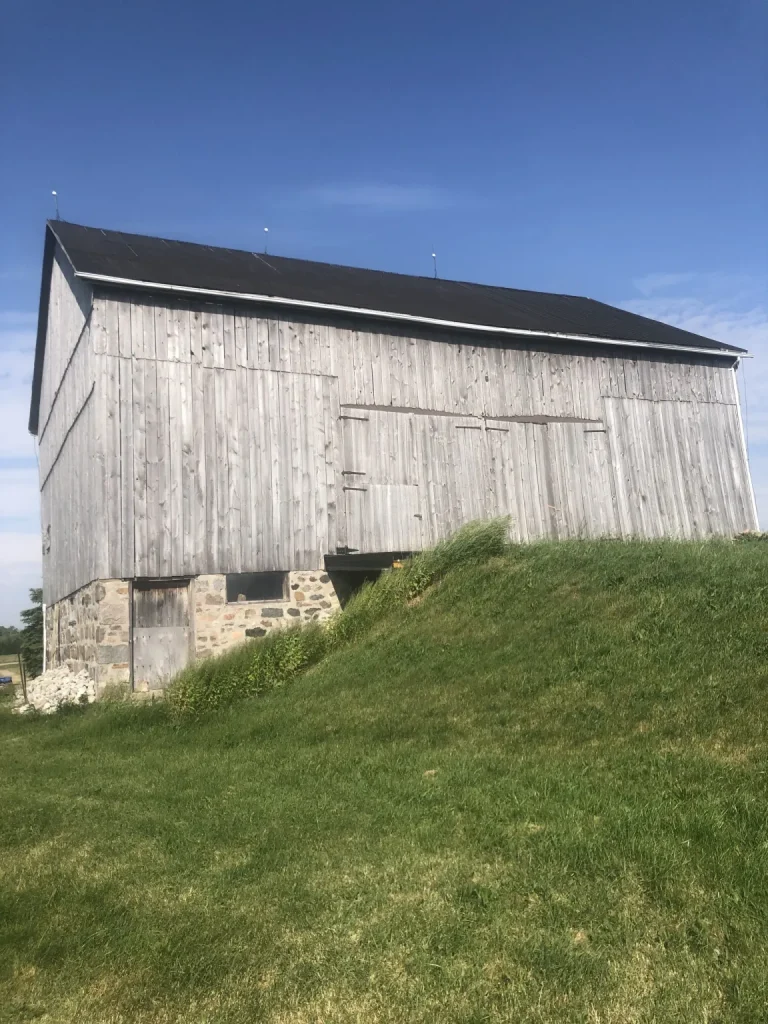
Since there has been no livestock on the property for nearly 30 years, this barn is used for storing collectables, with shop space on the stable level. The upper floor is a double drive floor, both being accessed from the gangway. I have a convertible which I winter store on upper floor, and a heavy dump trailer conveniently parked between it and the door.
On April 15th of this past year I decided to bring out the convertible, and so needed to move the dump trailer. I have a small Ferguson tractor which ordinarily use for this, but this particular day I had a much heavier tractor in use for other jobs, so I thought I would use it to move the trailer (not considering the extra weight).
When I got about a third of the way across the floor to the trailer, there was a snap, followed by a huge crash whereby the entire barn floor fell into the stable, taking the tractor with me on it Miraculously, I came away basically unhurt ( my wife, Janet, said I used up 3 of my cat lives).
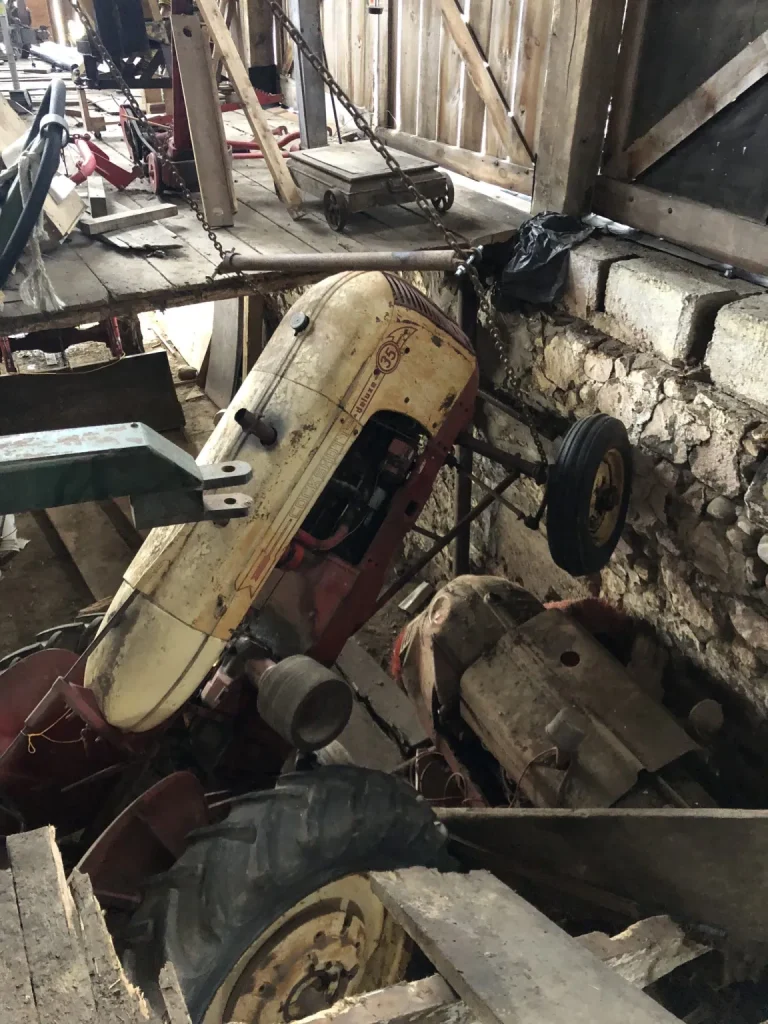
What I had failed to realize, was that while the flooring and joists beneath all looked good, the ends of the joists had rotted under the flooring. My Grandfather had replaced the wooden door sill with concrete, forming it around the joist ends. The top was not sloped toward the gangway, and so over the years, water which could come through the spaces in the wooden doors, had collected in the sockets which held the joist ends. When the first joist snapped, the entire width of the floor failed, and fell below.
I’m sending this story to you because many of your readers may acquire, or already have an older barn, which they consider safe. I urge them to check the structural integrity of the framework, as it might not be as good as it seems.
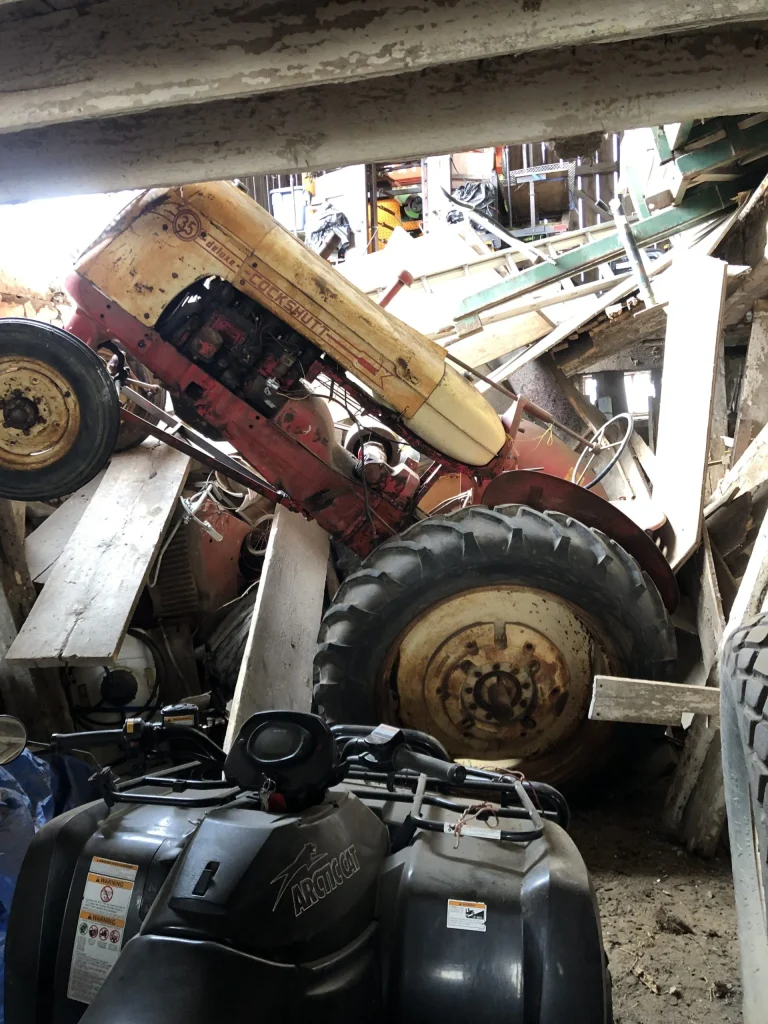
My floor has since been replaced with double 2 X 12’s on 12 inch centres, with 2 inch flooring on top. The joists have a waterproofing strip on top, and the door sill has been sloped to the outside.
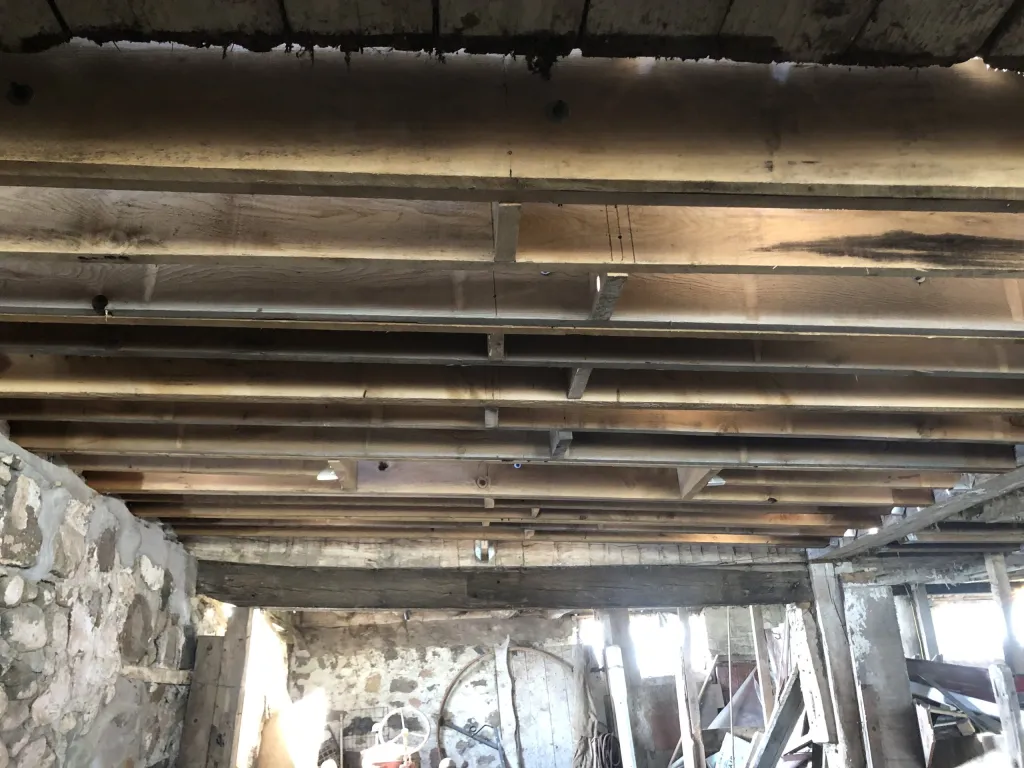
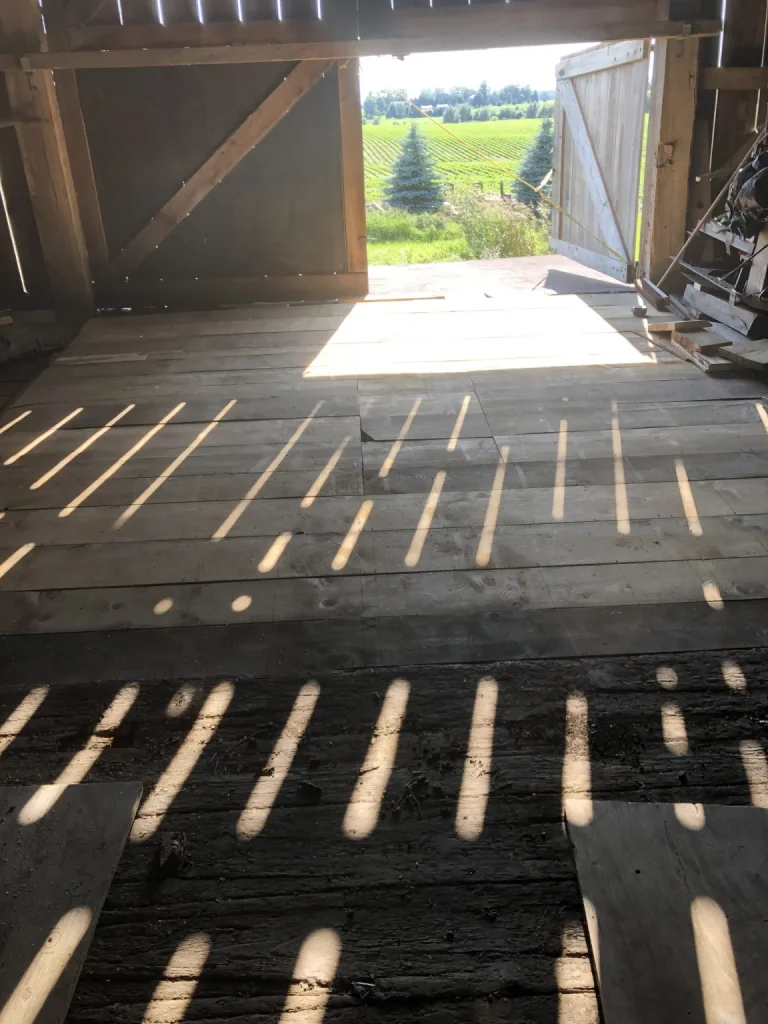
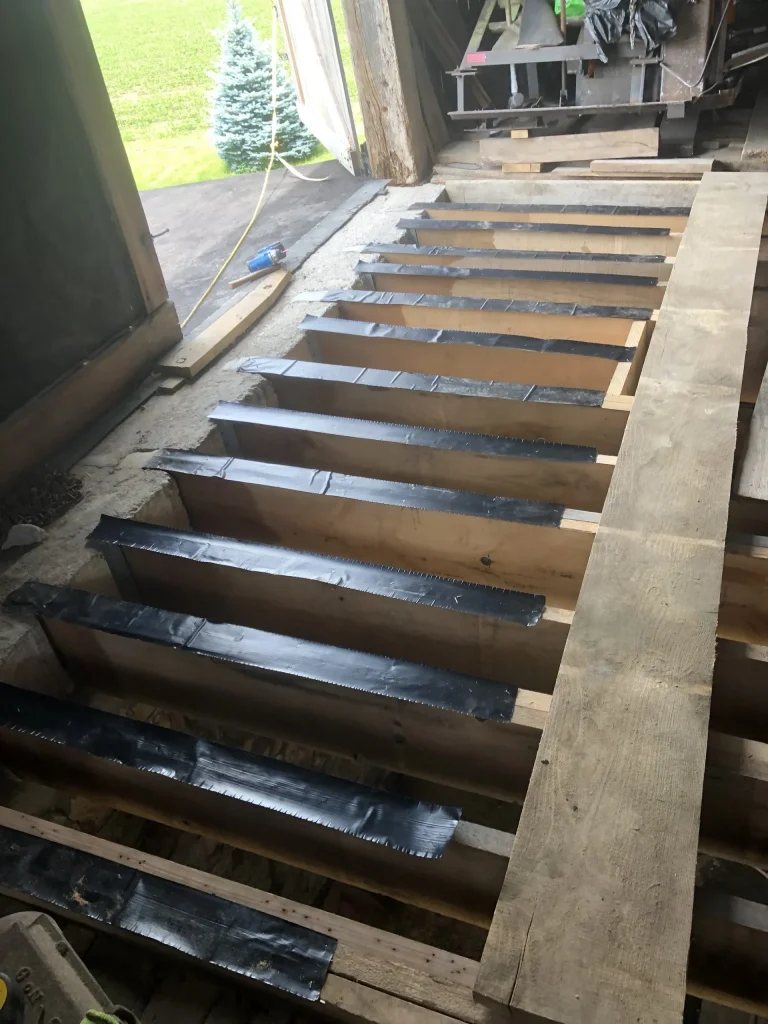
I’m thankful to have survived this adventure, and hope that this story may keep someone else from making my mistakes.
p.s. Following Blog Editor Jim Campbell’s comment on the fallen tractor being a nice Cockshutt, John wrote:
“Unfortunately, the “nice Cockshutt “ landed on top of a second “nice Cockshutt “ which didn’t have such a nice day.”
To all OBP blog readers: If you have not already done so, please support not-for-profit, volunteer-run, Ontario Barn Preservation by becoming a member! Also, if you are in the business of repairing, reconstructing, engineering, designing, etc. old barns, please consider advertising your amazing skills on our Barn Specia-List. If you own an old barn that you would like to offer to someone else, or you are hoping to obtain one for your own project, make use of our Barn Exchange page. If you own an old barn and would like to save it in the virtual world for future old barn lovers, historians and researchers, check out our Your Old Barn Study page. And please send us your own barn story, photos and/or art for submission as a OBP blog posting for the enjoyment and education of all barn lovers! info@ontariobarnpreservation.com
